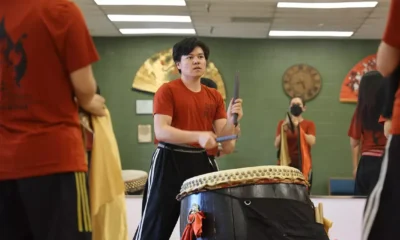cct-tracking
International Women’s Day: Celebrating Strength and Igniting Change – What You Need to Know

Demonstrations are set to unfold across the globe, from Tokyo to Mexico City, in observance of International Women’s Day on Saturday. The theme for this year is “Accelerate Action,” reflecting urgent calls for improvements in women’s rights.
Women worldwide will unite to advocate for equal pay, reproductive rights, access to education, justice, and increased representation in decision-making roles. Officially recognized by the United Nations in 1977, International Women’s Day varies in recognition and protest intensity across different nations, often stemming from women’s ongoing struggle for workers’ rights.
This year marks significant concern among activists as reports indicate one in four nations experienced a backlash against women’s rights last year, according to U.N. statistics. Events are expected to emphasize these pressing issues on March 8.
International Women’s Day serves as both a celebration and a call to action, showcasing a spectrum of activities, from peaceful demonstrations to fundraising races. Celebration of women’s economic, social, and political achievements is common, while others leverage the day to demand equal pay, healthcare access, and justice for gender-based violence victims, alongside education for girls.
In over 20 countries, including Afghanistan, Ukraine, and Cuba, International Women’s Day is recognized as an official holiday. Social media emerges as a pivotal tool for raising awareness and amplifying voices, particularly in repressive regimes.
The origins of International Women’s Day trace back to the U.S. in 1909 but gained a global focus through a feminist push for international recognition in 1910 at a socialist women’s conference in Copenhagen. The date of March 8 is commemorated following a significant protest in Russia in 1917, coinciding with the Julian calendar, where women demanded bread and peace during World War I.
Kristen Ghodsee, a professor specializing in Russian and East European studies, notes that the protest efforts galvanized mass participation and fueled revolutionary sentiment. The U.N. officially began recognizing the day in 1975, establishing it as a cornerstone for global women’s rights advocacy.
Celebrations manifest differently across cultures. In Eastern Europe, it’s common for women to receive flowers and sometimes a day off work. However, such gestures can be seen as simplistic amid ongoing struggles for equality. Recently, women in Turkey faced confrontations with authorities while protesting in Istanbul despite an official ban.
Mexico’s observances illustrate contrasting narratives, celebrating the country’s first female president while mourning escalating violence against women, including femicides. The nation and its Latin American neighbors often encounter simmering tensions during March 8, where calls for justice are prevalent.
United Nations data indicates a sobering statistic: a woman or girl is murdered every ten minutes by a family member or partner globally. In light of recent U.S. legal decisions undermining abortion rights, experts like Ghodsee assert that the significance of International Women’s Day has reached a critical juncture.
As the global political landscape evolves, the challenges confronting women’s rights remain acute, prompting renewed activism and advocacy as March 8 approaches.


















